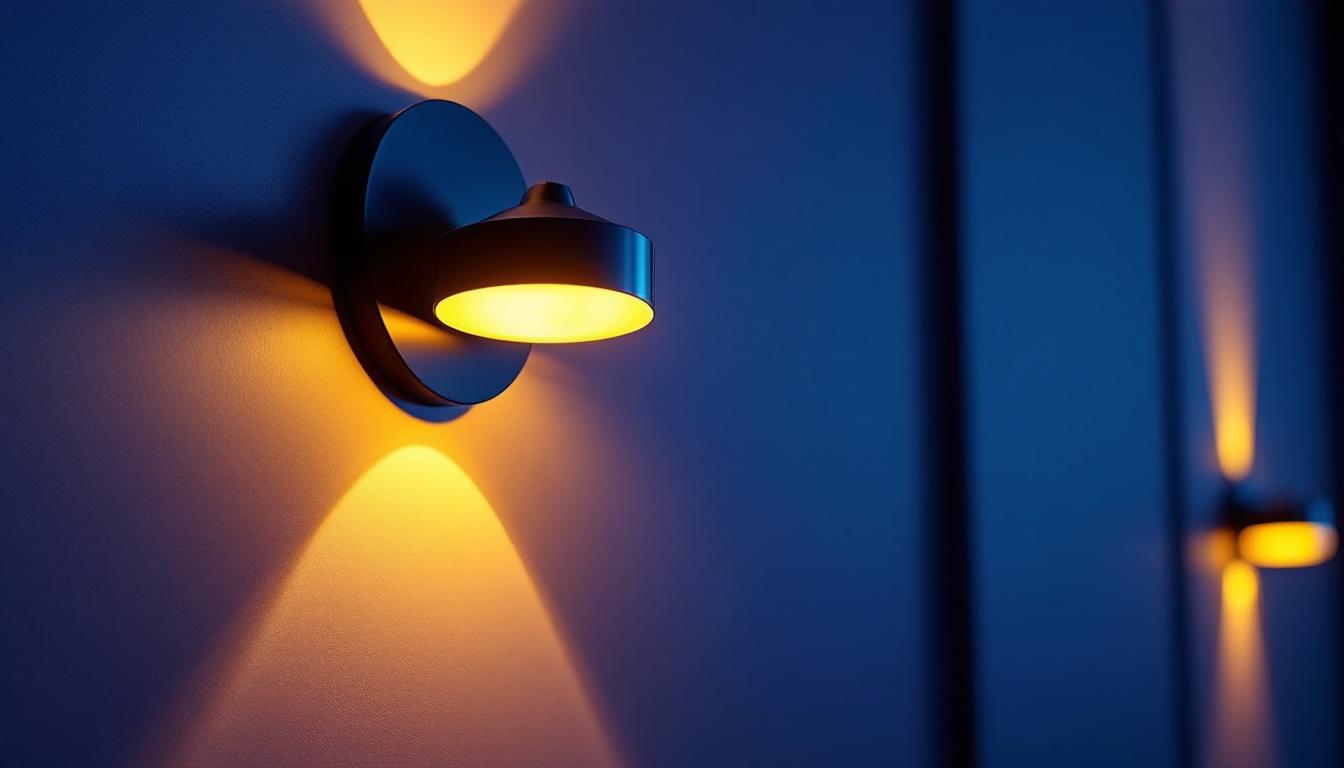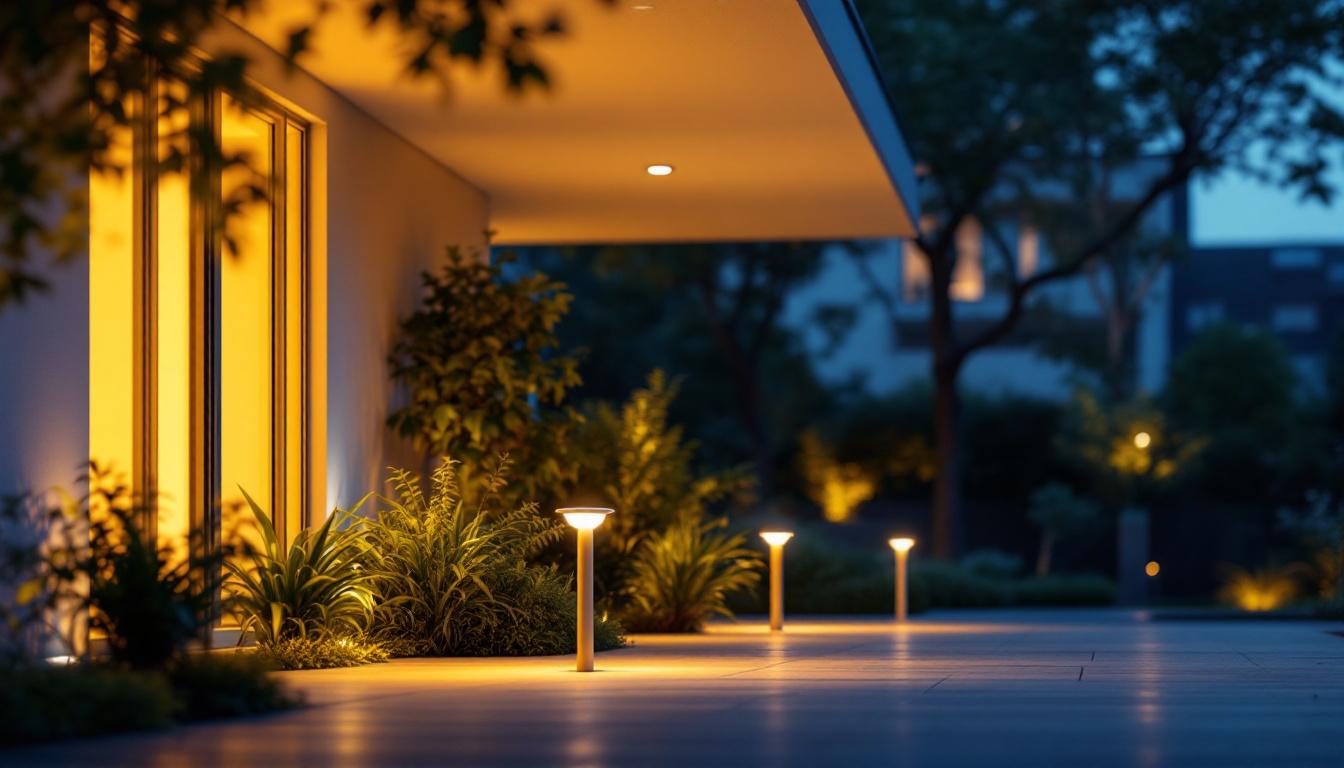
Lighting contractors play a pivotal role in shaping the ambiance and safety of movie theaters. Wall lights, in particular, are essential elements that contribute not only to the aesthetic appeal but also to the functional aspects of theater environments. From guiding patrons safely to their seats to enhancing the overall cinematic experience, movie theater wall lights have evolved significantly over the years. The transition from traditional incandescent bulbs to energy-efficient LED fixtures has not only reduced energy consumption but also allowed for greater versatility in design and color options, enabling theaters to create unique atmospheres that resonate with their chosen themes.
Understanding the latest trends in this niche is crucial for lighting professionals aiming to deliver modern, efficient, and visually appealing installations. This article delves into the most relevant trends in movie theater wall lighting, highlighting innovations, design considerations, and practical insights that every lighting contractor should know. One notable trend is the integration of smart lighting systems that allow for dynamic control over brightness and color temperature. These systems can be programmed to adjust automatically based on the time of day or the specific film being screened, enhancing the viewer’s experience while also providing flexibility for special events and private screenings. Furthermore, the use of motion sensors in wall lighting not only improves energy efficiency but also adds a layer of safety, ensuring that lights illuminate pathways as patrons move through the theater, creating a welcoming and secure environment.
Traditionally, movie theater wall lights served primarily as safety fixtures. The dimly lit environment of a theater necessitated subtle illumination to prevent accidents without disturbing the viewing experience. Classic sconces with frosted glass or fabric shades were common, providing a warm, diffused glow that guided patrons discreetly. These fixtures often featured intricate designs that reflected the grandeur of the cinema experience, enhancing the overall ambiance and setting the stage for the film to unfold.
Over time, the role of wall lighting expanded beyond mere functionality. As theaters transformed into entertainment hubs with luxurious interiors, lighting contractors began incorporating decorative elements that complemented architectural styles, from Art Deco to modern minimalism. The introduction of ornate fixtures, such as those adorned with crystals or elaborate metalwork, not only illuminated pathways but also became a statement of the theater’s identity. This evolution mirrored broader cultural shifts, where the cinema became a place of social gathering and artistic expression, prompting designers to think critically about how lighting could enhance the narrative experience of film.
With the rise of LED technology, movie theater wall lighting has undergone a significant transformation. LEDs offer superior energy efficiency, longer lifespan, and greater design flexibility compared to incandescent or halogen bulbs. This shift aligns with the growing demand for sustainable building practices and reduced operational costs. Moreover, the ability to create a variety of color temperatures and intensities with LEDs allows theaters to tailor the lighting to match different genres of films, enhancing the emotional impact of the viewing experience.
Smart lighting controls have also become increasingly prevalent. Integration with centralized systems allows for dynamic adjustment of light levels based on occupancy, time of day, or specific events. For contractors, this means designing systems that are not only aesthetically pleasing but also technologically advanced and easy to maintain. The advent of mobile applications and remote management systems has further revolutionized how theaters operate, enabling staff to make real-time adjustments and create immersive environments that can shift from a cozy, intimate setting for a romantic film to a vibrant, energetic atmosphere for action-packed blockbusters. This adaptability not only improves the audience experience but also optimizes energy consumption, reflecting a commitment to sustainability in modern cinema design.
Modern movie theaters emphasize layered lighting schemes that combine ambient, accent, and task lighting. Wall lights are no longer isolated fixtures but part of a cohesive design strategy. Contractors are increasingly specifying fixtures that provide subtle accent lighting to highlight architectural features, artwork, or signage, enhancing the overall atmosphere.
For example, LED wall washers or linear LED strips embedded along wall recesses create a soft glow that adds depth and dimension to the space. This approach elevates the visual experience, making the theater environment more immersive and inviting.
Adjustability is a growing priority in movie theater lighting. Wall fixtures with tunable white LEDs allow operators to modify color temperature from warm to cool tones, adapting to different times of day or special screenings. This flexibility supports varied moods, from cozy and intimate to vibrant and energetic.
Dimming capabilities are equally important. Smooth, flicker-free dimming ensures that light levels can be finely controlled to meet safety standards without distracting viewers. Lighting contractors should prioritize fixtures compatible with advanced dimming protocols like 0-10V, DALI, or DMX for seamless integration.
Thematic design has become a hallmark of contemporary theaters, especially boutique and independent cinemas. Wall lighting fixtures are often customized to reflect the theater’s branding or thematic elements, such as vintage Hollywood glamor, futuristic sci-fi, or art-house minimalism.
Contractors are collaborating more closely with interior designers and architects to specify bespoke fixtures or modify existing designs. Materials like brushed metal, textured glass, and even 3D-printed components are used to create unique wall sconces that serve as both functional lighting and decorative art pieces.
Safety remains paramount in theater lighting design. Wall lights must comply with local building codes and standards such as the National Electrical Code (NEC) and the Americans with Disabilities Act (ADA). This includes appropriate illumination levels to ensure safe navigation, especially in aisles and exit pathways.
Lighting contractors should be familiar with recommended lux levels for theaters, which typically range from 1 to 10 lux during showtime for aisle lighting. Fixtures must be positioned to minimize glare and prevent light spill onto the screen, preserving the cinematic experience.
Movie theaters experience high foot traffic and require lighting solutions that are both durable and easy to maintain. Wall lights should be robust, with materials resistant to impact, dust, and humidity. LED fixtures with long lifespans reduce the frequency of replacements, minimizing downtime and maintenance costs.
Additionally, contractors should consider ease of access for bulb replacements or repairs. Modular designs and quick-release mounting systems can significantly streamline maintenance processes.
Modern theaters increasingly rely on building automation systems (BAS) to control lighting, HVAC, and security. Wall lighting should be compatible with these systems to enable centralized control, scheduling, and energy management.
Lighting contractors must ensure that fixtures support communication protocols used in BAS, such as BACnet or KNX. This integration allows theater operators to optimize energy use, adjust lighting scenes remotely, and respond quickly to operational needs.
Human-Centric Lighting (HCL) focuses on the biological and psychological effects of light on occupants. Although primarily explored in office and healthcare settings, HCL principles are gaining traction in entertainment venues, including movie theaters.
By adjusting light intensity and color temperature throughout the day, HCL can enhance comfort, reduce eye strain, and improve mood. For lighting contractors, incorporating HCL features into wall lighting systems offers a competitive edge and aligns with wellness-focused design trends.
Wireless lighting solutions eliminate the need for extensive wiring, simplifying installation and offering greater flexibility for future modifications. Internet of Things (IoT)-enabled fixtures provide real-time data on energy consumption, fixture health, and occupancy patterns.
These smart systems empower theater operators with actionable insights to optimize performance and reduce costs. Lighting contractors should consider specifying wireless-enabled wall lights, especially for retrofit projects where minimizing disruption is critical.
Some theaters are experimenting with dynamic wall lighting that responds to movie content or audience interaction. Using sensors and programmable LEDs, wall lights can change colors, pulse, or create patterns synchronized with movie scenes or special events.
While still niche, this trend opens exciting possibilities for immersive storytelling and enhanced patron engagement. Lighting contractors involved in cutting-edge projects should explore these technologies and collaborate with audiovisual teams for integrated solutions.
Successful theater lighting projects begin with early collaboration among lighting contractors, interior designers, architects, and theater operators. Understanding the overall vision, functional requirements, and operational constraints helps in selecting the most suitable wall lighting solutions.
Engage in detailed discussions about fixture placement, control systems, and maintenance access to avoid costly revisions during installation.
While upfront costs are important, lighting contractors should emphasize energy-efficient fixtures and controls that reduce long-term expenses. LEDs combined with smart controls can lower electricity consumption by up to 70% compared to traditional lighting, delivering significant savings over time.
Providing clients with lifecycle cost analyses and energy savings projections strengthens proposals and supports sustainable building certifications.
Proper testing and commissioning ensure that wall lighting performs as intended. Verify dimming smoothness, color temperature accuracy, and control system responsiveness. Check for any unintended glare or light spill that could impact the viewing experience.
Documenting the commissioning process and providing thorough training to theater staff on system operation enhances client satisfaction and reduces future service calls.
Movie theater wall lighting is a specialized field that demands a balance of aesthetics, functionality, and technology. For lighting contractors, staying informed about current trends—from energy-efficient LEDs and smart controls to customizable designs and interactive effects—is essential to delivering exceptional results.
By embracing innovation, prioritizing safety and maintenance, and fostering collaboration with design teams, contractors can contribute significantly to creating memorable cinematic environments. As theaters continue to evolve, wall lighting will remain a critical component in shaping the overall guest experience and operational efficiency.
As you strive to stay at the forefront of movie theater wall lighting trends, LumenWholesale is here to support your endeavors. We provide lighting contractors with the highest quality, spec-grade lighting products at prices that can’t be beaten. Our extensive selection is designed to meet the most rigorous industry standards, ensuring you have access to reliable and high-performance lighting solutions for every project. With the added benefits of free shipping and hassle-free bulk purchasing, LumenWholesale is your go-to source for premium lighting without the premium price tag. Elevate your lighting installations and create unforgettable cinematic experiences with the value and convenience offered by LumenWholesale Lighting at the Best Value.

Discover essential tips and expert advice on avoiding costly pitfalls in your lighting projects with Contractor Lighting and Supply.

Discover how integrating mailbox posts with lights can illuminate new revenue streams for lighting contractors.

Discover why lighting contractors should prioritize outdoor lights with motion sensors.

Explore how Rab Light is revolutionizing energy efficiency with cutting-edge technology.